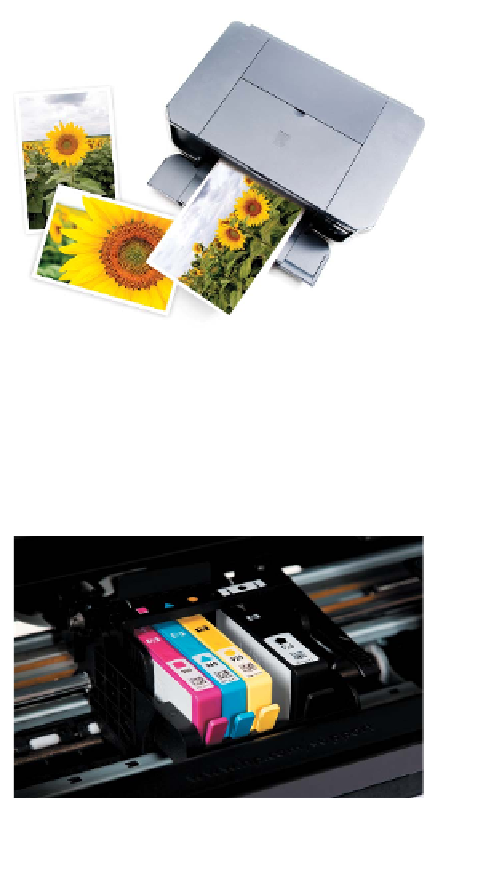Graphics Programs Reference
In-Depth Information
Quality of Detail
How clear an image prints depends on its resolution and screen
frequency. Professional printing devices are often capable of high
resolution. As such, they require a finer screen ruling (lines per
inch). For more on resolution, you can revisit Chapter 3, “Acquir-
ing Digital Images.” It's a good idea to discuss resolution require-
ments with your service provider or vendor before starting a job.
Tip
How Do Laser Printers Work?
For more information on laser
printing, be sure to read the infor-
mation article at
http://computer.
The majority of Photoshop users print their images on desktop
printers most of the time. These printers generally fall into three
categories:
•
inkjet. These printers are the most popular and
widespread. They offer relatively affordable print-
ing. For best results, look for inkjet printers with
separate cartridges for each color.
•
Dye sublimation. These printers allow for print-
ing of lab quality prints. Recently, the price of
these printers has plummeted. These printers do
not use dots; rather, transparent film (using CMYO
dyes—Cyan, Magenta, Yellow, and Overcoating)
is heated and transferred to the paper. The vaporized
colors are absorbed into the printer paper. This method is less
vulnerable to fading over time if it uses a laminated overlay.
•
Laser printer. Laser printers use static electricity to affix pow-
der to the page to form the image. These printers are generally
more expensive than inkjets but can usually print faster and at
a higher quality.
RGB vs. CMYK
Inkjet printers use CMYK inks, but they prefer to
ingest RGB images. If the image is in RGB mode,
there is no reason to convert it if you're using an ink-
jet printer. Desktop printers are designed to do their
own CMYK conversion using internal software.
Sending a CMYK image to an inkjet printer will
usually result in a second (and unpredictable) color


